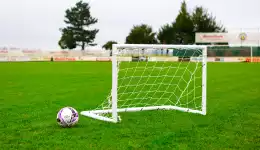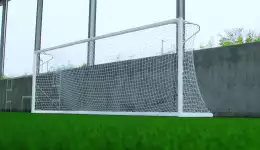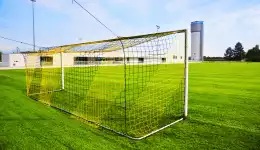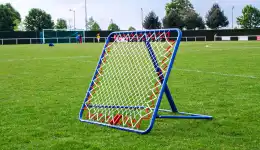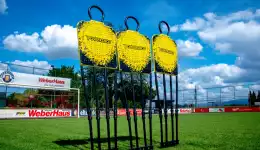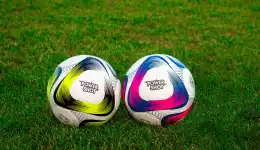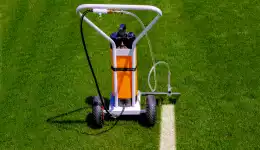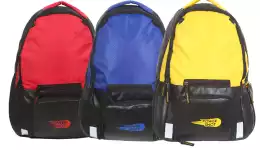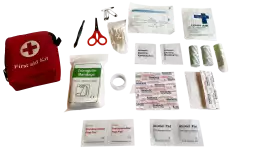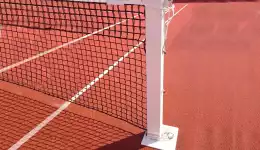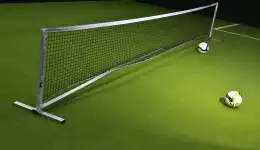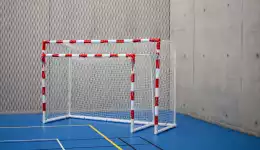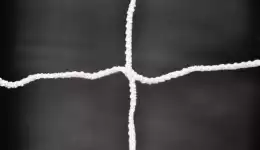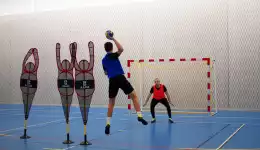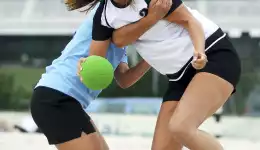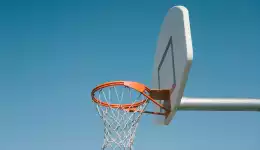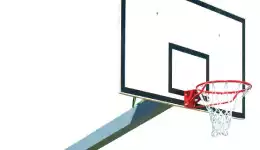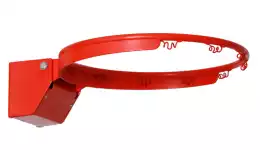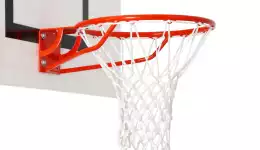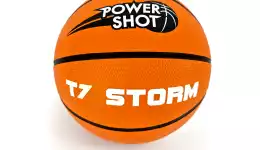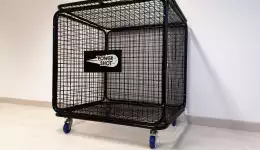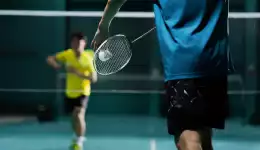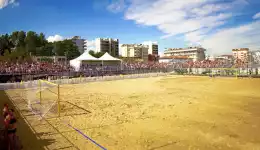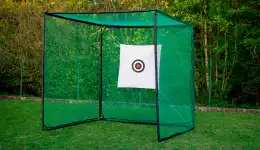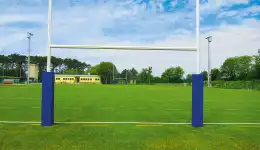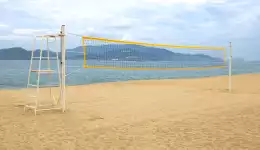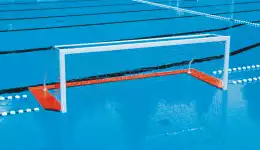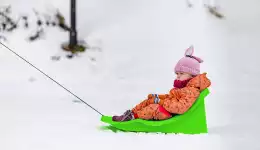Which sport suits me?
Handball training for children
Handball inspires even the youngest children - with games, exercise and team spirit. But how can children be motivated and successfully introduced to handball training? The key is an age-appropriate training approach that focuses not on performance and results, but on having fun with movement, developing motor skills and social aspects such as fairness and cooperation.
Important foundations are already laid in mini handball training. Through playful handball training exercises, children learn to coordinate their bodies, understand rules and implement their first throwing techniques. The focus is less on competition and more on individual development. Whether in handball training for the Minis, handball training for the E-Youth or targeted throwing training for the D-Youth - the key lies in the child-oriented design of the training sessions. The right amount of challenge and the recognition of small progress also play a major role.
With targeted mini handball training, age-appropriate equipment and lots of positive reinforcement, handball training can get children interested in the sport in the long term. If coaches take these principles to heart, they not only create the basis for sporting success, but also for the personal development of young players.
1. effective handball training: from mini-teams to D-juniors
The key to successful handball training for children lies in the systematic, age-appropriate design of the training units. From mini handball training to structured D youth handball training, the aim is to promote technique, motor skills, teamwork and understanding of the game in coordinated development phases. Even at pre-school age, children can be introduced to the sport in a playful way with simple handball mini training exercises - the focus here is on the joy of movement, body control and an initial feel for the ball.
With increasing age - for example in handball training for E youth or F youth - targeted coordination and technical content is added. Children learn throwing techniques, improve their agility and try out their first tactical elements in simple forms of play. Throwing training for handball E-youth, for example, lays the foundations for later dynamic finishes, while throwing training for handball D-youth focuses more on precision, throwing hardness and decision-making speed.
With a well-thought-out training structure, coaches can ensure that every child is challenged and encouraged according to their age. In the long term, this will not only produce high-performing players, but above all enthusiastic young athletes who enjoy coming to training and remain loyal to handball.
2. important recommendations for coaches for working with children in handball
2.1 The main objectives of the training concept
A good handball training program for children should do far more than simply teach sporting skills. The focus should be on the holistic promotion of children's development - physically, mentally and socially. Particularly in mini handball training or handball training for F-Youth age groups, a well-thought-out pedagogical concept is important that combines fun with targeted support.
In order for children to develop optimally, coaches should follow the following basic principles:
Individual approach: Every child has different requirements and talents. Handball training should recognize and promote these differences - be it in throwing training, handball E-youth or basic motor exercises for minis. This is the only way for every child to reach their full potential.
- Play instead of drill: Rigid, monotonous exercises inhibit motivation. Much more effective are playful, creative forms - such as small competitions or movement courses - which actively involve the children and increase their enjoyment of playing.
- Focus on coordination & fitness: Movement experience is crucial. Coordination is specifically trained with a variety of running, catching and ball games - an essential building block in any children's handball training.
- Promoting motor development: Handball training supports the development of basic movement patterns such as jumping, throwing, catching and running. This motor basis forms the foundation for more complex game actions later on.
- Creating a sense of achievement: In mini handball, it's not handball goals or victories that count, but playing together. Children should feel valued, experience success - and gain the self-confidence to develop further.
Child-friendly handball training takes individual needs into account and creates a positive learning atmosphere. This promotes not only sporting but also personal strengths - the basis for long-term enthusiasm and development in handball.
2.2 Three steps to developing the personality of a real athlete
Good handball training for children not only focuses on technique and fitness - it also supports personal development. According to the concept of the Thuringian Handball Association, the focus is on three pedagogical guidelines that should help every child to develop as a player and personality.
These principles can be put into practice at any training age - whether in mini handball training, D-youth handball training or the first throwing training for E-youth handball:
- Promote playful development
Children learn best through movement and play. That's why all handball training exercises should be designed to be age-appropriate and playful. Whether it's passing drills, small forms of play or catching games - it's important that the children enjoy them and that they learn important fundamentals of the game at the same time. - Freedom and variety
Standardized routines are important - but it is even more important that children have the freedom to develop. Open, creative forms of play encourage independent thinking, decision-making and tactical understanding. This is precisely the basis for later game intelligence - whether in F-Youth or D-Youth handball training. - Using mistakes as learning opportunities
In children's training, it is essential to be error-friendly. Mistakes are part of learning and are not weaknesses - they are important steps in development. Encouraging children to try out new things and learn from mistakes boosts their self-confidence in the long term.
A modern training approach for children's handball does not mean avoiding mistakes, but growing with them. With playful variety, age-appropriate exercises and an open approach to mistakes, not only are better players formed, but also self-confident young people.
3. handball training for children: how to make training effective
Age-appropriate handball training combines play, targeted encouragement and genuine enjoyment of the game. Children should neither be overchallenged nor underchallenged - because both can inhibit motivation in the long term. The right balance is crucial: training content must correspond to the children's level of development so that they can experience progress and develop while having fun. This is the only way to create real moments of success that lead to long-term enthusiasm for the sport of handball.
3.1 Handball training for mini-games
Minis are children up to around 6 years old - a phase in which movement and play play a central role in their development. At this age, the focus of handball training for children is not on performance, but on the joy of movement and playing together. The aim is to awaken an initial enthusiasm for sport, promote basic coordination skills and strengthen the children's self-confidence through a sense of achievement.
Minis handball training should be designed to be primarily playful. Within this framework, the children learn how to handle the ball - for example through simple handball mini training exercises that improve motor skills but also promote teamwork. Important aspects such as throwing, catching and running with the ball are taught in the form of varied games, which are fun and lay the foundation for later handball training for E youth or D youth.
The question " Handball from what age? " can also be answered here: children can start Mini Handball training from pre-school age if the training area, content and methods are suitable for children. This creates an early, positive approach to sport, which promotes long-term motivation and sporting development.
3.2 Appropriate training conditions for minis
Suitable training conditions are essential for successful handball training for children in the mini age group. In this age group - i.e. children under the age of 6 - mini handball training is primarily about enjoying movement, gaining initial coordination experience with the ball and a playful introduction to team play. The training framework should be motivating, safe and age-appropriate. The following requirements have proven to be effective:
- Small fields (e.g. 10 x 20 m)
This keeps the playing field clear, giving the children orientation and safety. - Soft, non-slip balls
Balls specially developed for handball training for minis enable fear-free gripping, catching and throwing. - Max. 4 against 4 players
Small teams promote ball contact, participation and team spirit - in the spirit of individual handball training. - Short game units (15-20 min.)
The ability of mini-age children to concentrate is limited, so shorter units are ideal.
A well-thought-out environment ensures that children gain positive experiences during handball training. This lays the foundation for long-term enthusiasm and later development in the F, E or D youth.
3.3 Goals of handball training for the Minis
In mini handball training, the focus is not on tactics or performance, but on fundamentals and enthusiasm. Children in mini handball training should primarily learn through play, familiarize themselves with the ball and the space and gain their first sense of achievement. The handball mini training exercises serve to develop motor skills and at the same time to awaken joy in the game.
- Learning basic techniques: e.g. through simple coordination exercises with and without the ball
These exercises promote ball awareness, body awareness and mobility - key goals in handball training for children. - Understanding the rules: explained in a child-friendly, playful way
This is an entertaining way for children to learn teamwork, fair play and the basic structures of the game. - First throw: e.g. the "slap shot" - a forearm throw with an open palm
A simple but effective technique to make it easier to start throwing in handball E-youth training and later in the higher age groups.
These goals create a stable foundation for the next phases of development - whether in E youth handball training or later in D youth handball training.
3.4 Handball mini training exercises
It is important for mini handball players to discover movement sequences through play and fun. Here are some exercises:
| Exercise | Aim | Material |
| Throwing the ball over cones | Aiming accuracy & throwing power | Ball, cone |
| Imitate animal movements | Body control & balance | Mats |
| Catch the ball! | Reaction & hand-eye coordination | Softball |
3.5 Exercises and training for F-youth in handball
Children in the F youth age group (usually between 7 and 8 years old ) are at a stage where they are better able to absorb and process simple handball training exercises. They are able to understand basic game sequences and actively participate in game situations.
In this age group, you start with simple tactical approaches, but without fixed game systems. It is important that the training remains creative and the focus is on fun. The children should continue to learn through game forms instead of being overwhelmed by too much theory.
Typical training content includes
- Improving ball control through handball mini training exercises
- Playful practice of passing and catching techniques
- Introduction to throwing training for handball E-youth through simple throwing exercises
- Promotion of team behavior through cooperation games
The aim is to build on the basics from the mini handball training and at the same time to further develop age-appropriate playing skills. The following also applies here: handball training for children should be individually adapted to the children's level of development.
3.6 Training requirements for the F-Youth
In order for handball training for F-Youth to be effective and motivating, certain framework conditions should be taken into account. Children of this age need clear structures, plenty of freedom of movement and, above all, varied content that challenges and encourages them in a playful way.
The following conditions have proven to be effective in handball training for F-Youth children:
- Playing time: approx. 2 x 15 minutes
- Ball size: 0 - small and easy to grip for children's hands
- Form of play: e.g. 5 against 5 on a reduced field
- Goals: Learning to throw, strengthening team spirit, developing understanding of the game
- Recommended exercise: Throwing training handball E-youth preparatory through target throws on small goals
Especially in this development phase, it is important to use creative training methods that are close to the game. The combination of movement, fun and initial handball training exercises is ideal for getting children interested in the sport in the long term.
3.7 Handball training E-Youth
With the transition to the E-youth - i.e. at the age of around 9 to 10 - the training focus shifts more towards tactical understanding and coordinated movement sequences. Children at this age are usually able to grasp more complex game situations and react to them in a more targeted manner. The repertoire of handball training exercises expands accordingly in order to improve the pace of play, overview and teamwork.
Typical contents of handball training for E youth are
- Passing under pressure - e.g. in 2-on-1 drills
- Free running and covering behavior - basis for offensive and defensive game intelligence
- First game forms with counter attack - including game-like scenarios from the handball E-youth throwing training
The training is supplemented by targeted mini-handball training exercises that focus on coordination and speed of action. The age-appropriate training approach remains at the forefront: excessive demands are avoided and individual strengths are encouraged instead - an important component of all handball training for children.
3.8 Handball training D-Youth
At the age of 11 to 12, children enter the D-Youth - a particularly important phase for technical and tactical training. Here, the basics from the E-youth are systematically deepened and expanded. Handball training for D youth not only means targeted training in throwing and passing techniques, but also the introduction to complex game situations and initial team tactical concepts.
The focus is on developing individual skills and team play. Conditioning and coordination skills are also becoming increasingly important. Handball training for children in this age group therefore offers a good balance between technique, game intelligence and enjoyment of the game.
Typical content in D youth handball training:
- Throwing training for D youth handball (e.g. jump shot, impact shot)
- Positional play - correct division of space in attack and defense
- Group tactics (attack/defense) - e.g. simple moves and team coordination
- Handball exercises D youth : change of pace, handover/takeover to promote rhythm of play and ball control
Age-appropriate teaching not only expands the technical repertoire, but also promotes understanding of the game. The aim is to motivate children to develop their skills and get them excited about handball in the long term.
5. conclusion
Handball training for children needs more than just a ball and a goal - it needs age-appropriate content, committed coaches and a lot of patience and empathy. Well thought-out handball training that takes into account the developmental stage of the children creates the basis for long-term enthusiasm and sporting success.
The focus is always on motor development, having fun playing and the targeted promotion of individual skills. Whether in mini handball training, in the first throwing training for handball E-youth or in advanced handball training for D-youth - the path from the first movements to tactical understanding is varied and exciting.
Important basic principles:
- Learning takes place through play, not through pressure or rigid discipline.
- Ball size, field size and rules of the game must be adapted to the age and ability of the children - this applies from training the F-Youth to the E-Youth to the D-Youth.
- Good training accompanies the children holistically on their sporting path - from the first handball training minis to team players with personality and game overview.
The right balance of play, technique, coordination and team spirit is crucial - because only those who enjoy training will remain loyal to the sport of handball. No matter what age a child starts: With structured handball training exercises, creative forms of play and targeted throwing training Handball D-Jugend, young talents can develop their full potential.
Handball equipment
Handball goal
Handball goal net
Handball goal Shock-absorbing net
Handball accessories

 German : Welche Sportart passt zu mir?
German : Welche Sportart passt zu mir?  French : Quel sport est fait pour moi ? Trouver le sport qui me correspond vraiment
French : Quel sport est fait pour moi ? Trouver le sport qui me correspond vraiment  English : Which sport suits me?
English : Which sport suits me?  Spanish : ¿Qué deporte me conviene?
Spanish : ¿Qué deporte me conviene?  Italian : Quale sport mi si addice?
Italian : Quale sport mi si addice?  Dutch : Welke sport past bij mij?
Dutch : Welke sport past bij mij? 
